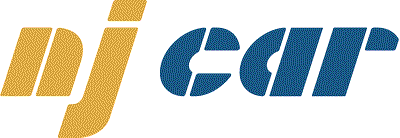Automotive dealers are all wondering how to deal with waning inventory levels that continue to plague the industry. So, what can dealers do to ramp up vehicle sales when the inventory does not exist? Some dealers are reviewing the lease schedules for their brand and asking customers with lower mileage units to see if they are interested in selling their vehicles back to the dealership — in some cases, for more than the customer paid for the vehicle! Crazy times to say the least. Mining the outstanding leased vehicle listings may be a good way to find vehicles for your inventory. Auction houses are reporting record-level prices, especially in metro markets.
Consider looking at auction sites and inventories of other dealers in outlying areas and non-major metro markets where sales are typically low. They may have some deals on used vehicles out there. There is also the tactic of checking if a service customer is interested in selling their vehicle — if they can spare it or if it is coming off lease soon; they can pull it in and pay off the remaining lease. However, never lose sight of keeping what sells that fastest, with the highest grosses on your lot.
We have heard of some dealers stating if there is no trade-in for a new vehicle sale, the MSRP will be inflated, as no residual sale is available for the dealer. If a trade-in exists, a customer can obtain a vehicle at MSRP. Multiple dealer groups can sell off other storefront inventories, but that is not a long-term solution either.
It is not certain when manufacturers will be filling up dealership lots again. However, this challenge also provides an opportunity. While inventory is low, now is a good time to review the expense structure of the dealership operation. Going forward, variable costs should be scrutinized, including advertising and other marketing costs. Fixed expenses should be reviewed in detail, such as excess rents. Dealers may consider looking at obtaining rent concessions and reviewing management fees and other costs from the vendors with which they do business.
With sales curtailed, now may be a good time to re-negotiate as many costs as possible. Also, dealers should review their current workforce. Cross-train staff in almost every dealership area, from accounting department to salesforce and finance and insurance products. Do more with less by developing staff bench strength in all facets of your business to keep a balanced workforce with longevity. With the continued inventory shortages, your staff should be looking at the impact on LIFO reserves, planning cash flow and other impacts on your tax situation.
Dealers should also be focused on the back-end of the business, with record sales possible in their parts and service departments. Make sure any potential onslaught of repair orders doesn’t impact your established best practices. Look to maximize hours and parts sales per repair order while maintaining high CSI and providing excellent customer service. Evaluate the parts inventory, ordering and pipeline of items to ensure that the parts inventory is maximized for days’ supply and meeting current and anticipated demand. Don’t waste money on parts that are not necessary to stock immediately. Perhaps look at services not previously offered, such as tires and more chemicals.
Dealers should mine the “lost souls” in their customer history files and see if you can attract them back through competitive pricing matrixes. Automating the service drive process and offering pre-booking appointments has been around a long time, but having parts delivered to bays ahead of confirmed appointments is a huge time saver allowing for more time to devote to servicing vehicles and no wait time between vehicles. Speeding up the service lane process also adds more time to work on vehicles. Today’s technology makes using text messaging and email communication with customers easier and makes scheduling much more efficient.
Ken Rosenfield, CPA, is a Managing Partner at Rosenfield & Co. He can be reached at ken@rosenfieldandco.com.










